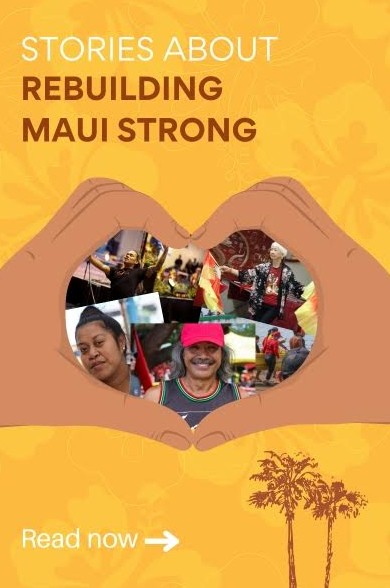By Ahmed Sharma | South Asian American Advisory Board
While the popular Disney+ series Ms. Marvel aired its season finale episode about a month ago, there are still things about the show that cannot be forgotten or overlooked.
This reviewer noted first on AsAmNews, how amazing it was to see a vision like a Muslim, Pakistani American superhero come to life and the attitude remains the same. Despite low viewership by some at the start of the series, the show received a lot of praise from viewers and critics alike.
The temptation to focus on Ms. Marvel’s visually captivating scenes and whimsical storyline will sadly be buried in this review, as what really caught my attention was the overall depiction of Partition; the breakdown of India and Pakistan’s separation on August 15, 1947-75 years ago Monday. Sadly, the explanation of what occurred was briefly discussed; and while there was much to be said about what happened during that time, this reviewer reminded himself it’s a TV show, not a documentary. However, in many instances during the series, Ms. Marvel managed to zero in on the overlooked pain South Asian Americans tend to have toward partition.
In casual conversations, as depicted in Ms. Marvel, a lot of older generation Pakistani Americans and Indian Americans tend to feel that India was once a big country that was divided by the British.

During a dinner scene in the second episode, the titular character’s alter-ego is listening to her father tell his daughter-in-law-to-be about partition about how “back then there was no Pakistan or Bangladesh. It was all one country: India.” Her mother then chimes in, “the British just left us with a mess. It was very hard for many people. And then there was a civil war.” The older brother has the final word and drops the mic with the devastating truth, “every Pakistani has a partition story and none of them are good.”
Many survivors, who are fortunate enough to be alive share their stories, still have trauma they hang on to and these memories have led to decades of pain. It’s a shame, really, for current Pakistani and Indians, at least living in America to maintain any type of rivalry. This is because most Pakistanis tend to enjoy Bollywood films, and a lot of popular Bollywood actors happen to be Muslim. So the idea that Pakistani and Indian Americans would feel some type of hatred toward each other over something completely out of their control, is trivial. And yet, nothing has been done to combat this level of animosity.
Meanwhile, in India, there are high levels of nationalism amongst conservative Hindus. An article by Pew Research found that “even though Indians live in a diverse multireligious and multilingual society, majorities link Indian identity with a particular religion and language, as well as with ancestry. A large majority (70%) say it is important to have Indian ancestry to be truly Indian. And 57% of Indian adults say it is very important to be Hindu to be truly Indian.”
On the other hand, there are progressive voices, who tend to be very outspoken about it. One of the most prominent Indian voices was by comedian Vir Das, whose statements were met with controversy for describing two types of Indias, and cited examples of the good, bad, and the inexplicable. In one instance, Das complimented the ambition of young Indians but criticized the lack of political prowess, which arguably has led nationalism to make a frightening comeback.
“I come from an India where we have the largest working population under 30 on the planet, but still listen to 75-year-old leaders with 150-year-old ideas,” he mused.
According to an explainer of partition in The Economist, the rivalry between both countries was not foreseen but seems to be capitalized on, at least in the contemporary sphere.
“At the time of Partition, few imagined that India and Pakistan would be enemies, or that the minorities living in each would be insecure. Muhammad Ali Jinnah, Pakistan’s founding father, spoke of retiring to his house in the Indian city of Bombay (now Mumbai). Alas, the logic of Partition—the defining of nations by religious identity alone—has emboldened those who cling most strongly to that identity at the expense of everyone else. Plotting Pakistani generals, rabble-rousing Indian politicians, and religious extremists on both sides have made careers from stirring animosity.”
MCU’s Ms. Marvel was able to capture very subtly the overall general feeling American Pakistanis and arguably Indians feel with the subject of partition comes out. Still, the sins of our family members or our forefathers – not even our forefathers, but our grandparents, remain high. And yet there’s no peace.
In the U.S., many were thrilled to have Kumail Nanjiani cast as the MCU’s first South Asian actor, not only for his Adonis-like transformation. There was a lot of excitement from brown viewers who were finally able to see themselves represented on screen. That level was exacerbated for Pakistanis, with Ms. Marvel, despite the fact Kumail Nanjiani was a Pakistani, playing a character – or whose alter ego rather, was an Indian movie star.
This observation is not meant to cause any animosity or attack this occurrence, by any means. Instead, it’s an examination that this show about a Pakistani Muslim should be a way for Indians and Pakistanis to celebrate once again, the representation of South Asians.
As we remember the 75th anniversary of India and Pakistan’s respective independence, we’re understandably unable to let go of the hurt caused by millions of Muslims and Hindus, but we can (as Americans) celebrate how far we’ve come in turning the tables of oppression, by telling our own stories with our own voices.
People like Aziz Ansari, Mindy Kaling, and Kal Penn to name just a few were impressing fans of the silver screen by just being themselves, we’re doing so much. And then Kumail Nanjiani appeared to remind people that there are Pakistanis out there. Soon there will be a Bangladeshi or Kashmiri American actor, celebrity, or public figure that’s going to remind everyone how incredibly diverse and unique South Asians are.
Hopefully, by then, all of us in the South Asian community can appreciate one another a little more and raise a cup of chai and know that, despite whatever imaginary borders were erected 75 years ago to make us feel divided, we are still and always have been one people.
AsAmNews is incorporated in the state of California as Asian American Media, Inc, a non-profit with 501c3 status. Check out our Instagram account. Go to our Twitter feed and Facebook page for more content. Please consider interning, joining our staff, or submitting a story, or making a financial contribution. We are committed to the highest ethical standards in journalism. Please report any typos or errors to info at AsAmNews dot com.





And then there are Sindhis like myself whose parents and my ancestors thrived in Sindh but because of being Hindu, took refuge in the new secular India across the border, and then spread throughout the world in a mercantile diaspora. My own parents left Sindh in their teens, and never returned to their ancestral land but lived their lives in Manila, Philippines until their demise in their mature senior years. Secular hybrid PinoySindhiness thrived in my household because Mama and Papa experienced the casualties of intersectarian hatred and abhorred it : Jesus, Mary, Sufi saints, Guru Nanik and Buddha kept good company with Krishna, Shiva, Ganesh, Laxmi and Jhoolelal in our shrine and beliefs.